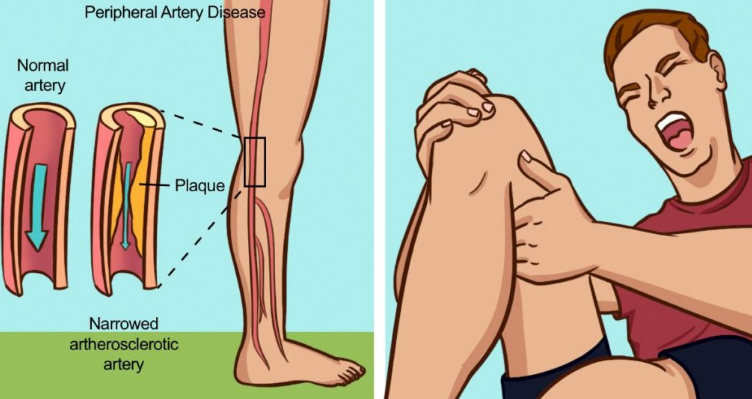

Tiredness when walking and cramping or pain in your lower extremities could mean you have peripheral artery disease, or PAD. The American Heart Association (AHA) says the disease often goes untreated by health-care professionals because they can mistake it for something else. It’s important to understand the signs and symptoms so you can have an educated discussion with your doctor.
The AHA says PAD is the narrowing of the peripheral arteries to the legs, stomach, arms and head. It is most common in the arteries of the legs. PAD is caused by atherosclerosis that narrows and blocks arteries in these critical regions of the body. People who have PAD are at a much higher risk for a heart attack or stroke.
CAUSES
According to WebMD, smoking, high blood pressure, high cholesterol, being overweight and not being active are the main causes. Diabetes can make it much worse.
SIGNS AND SYMPTOMS
According to WebMD, symptoms of PAD include:
- Leg pain that usually comes with the onset of exercise, then stops when you rest
- Burning
- Numbness
- Wounds that heal poorly
- Area of the body aÖected is cooler than the rest
- Shiny skin (over legs or arms if this area is aÖected)
- Loss of hair on the legs
- Fainter pulse in feet
Some people, though, do not experience any pain or symptoms. This can happen when the body makes new blood vessels grow around the blockages.
DIAGNOSIS
PAD is often misdiagnosed, but there are ways your doctor can check to see if you’re aÖected by the disease, according to the AHA. Your doctor can test your ankle-brachial index, which compares the blood pressure at your feet with the blood pressure in your upper arm. Doctors can also perform imaging tests, such as an MRI, CT scan or angiography, especially for someone whose case is severe. This helps doctors identify where the blockage is.
TREATMENT AND PREVENTION
The AHA says treating PAD often focuses on reducing symptoms and ×nding ways to prevent further progression of the disease. Your doctor will likely have you focus on lifestyle changes like:
– Increasing physical activity
– Eating a healthy diet
– Quitting smoking
– Taking medication to reduce high blood pressure and/or lower cholesterol
It’s important to note that treating PAD and preventing PAD are very similar. To avoid getting PAD, you should exercise, eat well, not smoke and keep your blood pressure and cholesterol levels in check:
Finally, there is a small number of patients who need a procedure like an angioplasty to open up the artery that’s clogged or a stent insertion to keep the artery open. These are minimally invasive procedures.
Source : mrhealthyguru.com